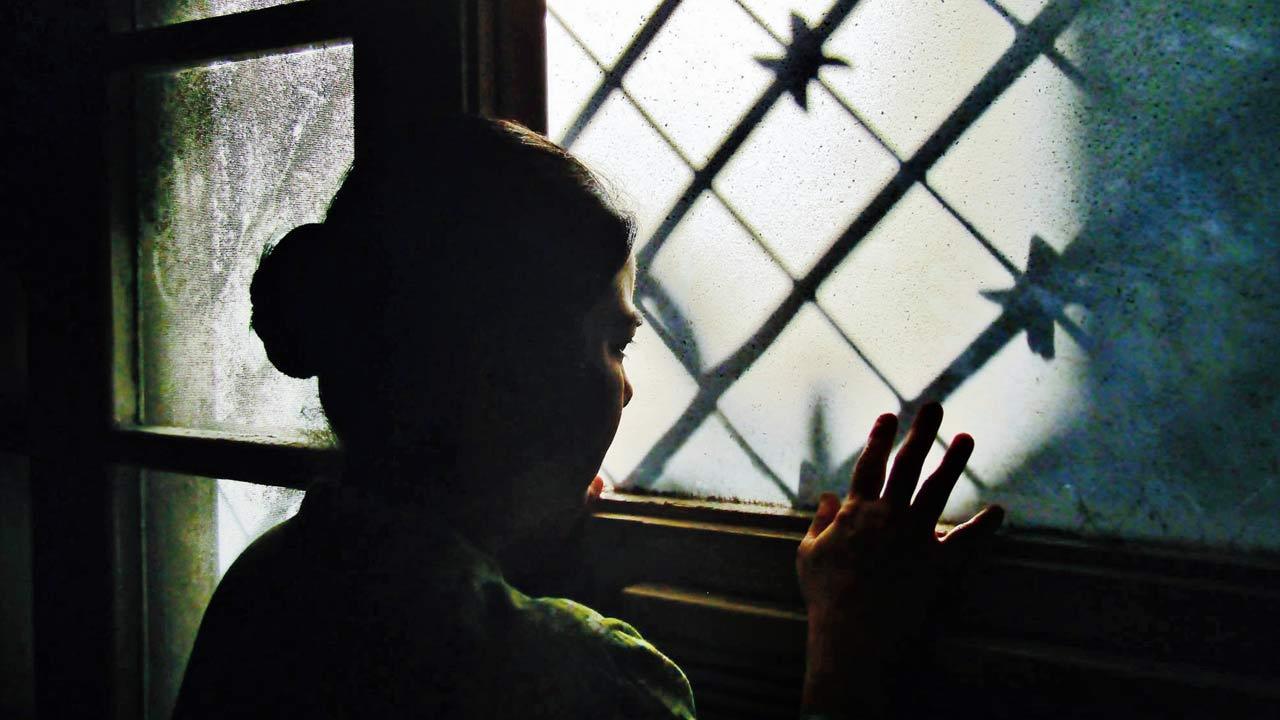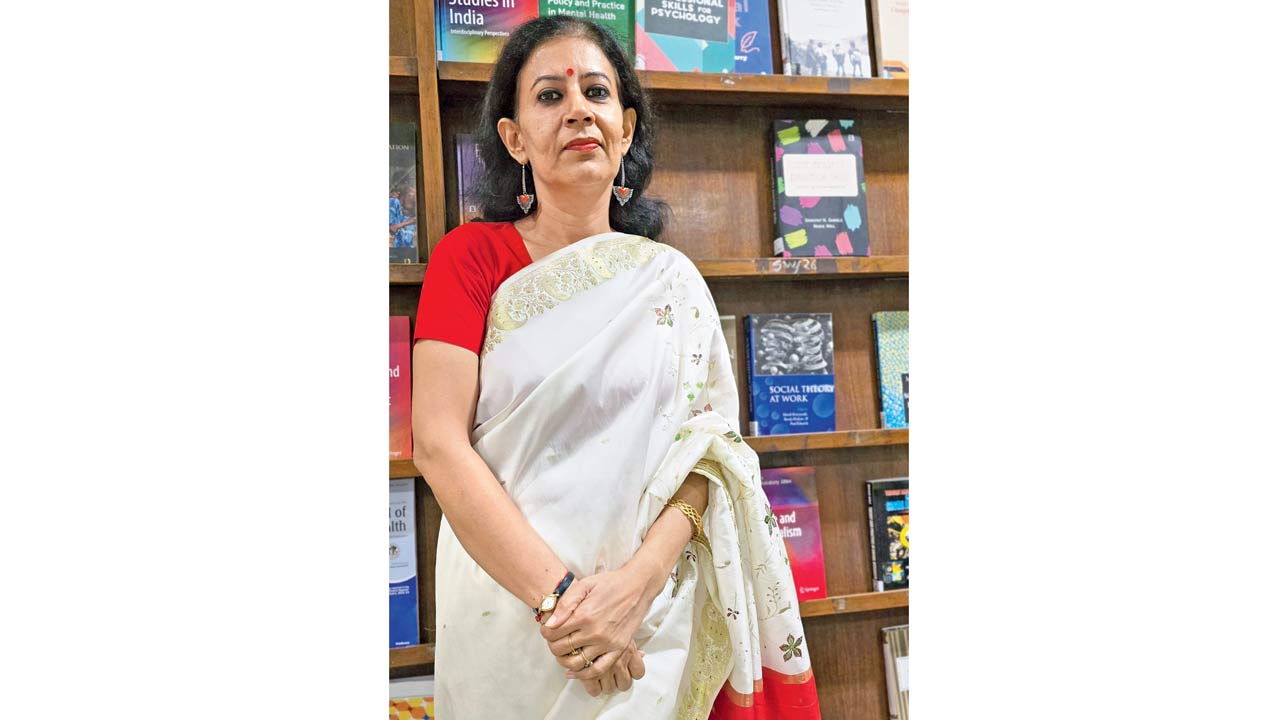Dr Meenu Anand’s resource book redefines mental health care by blending theory with lived experiences of counsellors, social workers, academics and caregivers

Women are about 50 per cent more likely to suffer from depressive and anxiety disorders than men. Pic for representation
![]() Why is mental health treated as a binary state, as if one is either mentally healthy or mentally ill? Why is mental health described in terms of mere symptoms/names of disorders, while it actually encompasses “thriving, flourishing, handling relationships, managing stress, feelings of well-being and gratification”? Even after the discourse on mental health has taken centerstage, in a somewhat decorative way in the post-pandemic world, why is it talked about in a limited way, asks Dr Meenu Anand, the author-editor of the just-released Mental Health Care Resource Book/Concepts and Praxis for Social Workers and Mental Health Professionals (Springer publication). Her resource book, (to which she devoted seven years) is a marriage of grassroots voices, theoretical perspectives, practice skills, as well as emancipatory praxis. It highlights the broader social context of mental health care while questioning the hegemony of a psychiatric diagnosis.
Why is mental health treated as a binary state, as if one is either mentally healthy or mentally ill? Why is mental health described in terms of mere symptoms/names of disorders, while it actually encompasses “thriving, flourishing, handling relationships, managing stress, feelings of well-being and gratification”? Even after the discourse on mental health has taken centerstage, in a somewhat decorative way in the post-pandemic world, why is it talked about in a limited way, asks Dr Meenu Anand, the author-editor of the just-released Mental Health Care Resource Book/Concepts and Praxis for Social Workers and Mental Health Professionals (Springer publication). Her resource book, (to which she devoted seven years) is a marriage of grassroots voices, theoretical perspectives, practice skills, as well as emancipatory praxis. It highlights the broader social context of mental health care while questioning the hegemony of a psychiatric diagnosis.
ADVERTISEMENT
Dr Anand is an associate professor at the Delhi University’s department of social work.
Her recent research papers revolve around themes like gendering COVID-19, mental health diabolic of urban living, and dynamics of intimate partner violence and social work practice.
 Dr Meenu Anand’s book touches upon the human rights of people with mental challenges
Dr Meenu Anand’s book touches upon the human rights of people with mental challenges
In a rather daring declaration, Dr Meenu Anand says mere psychiatry—which draws on theoretical biomedical model guidelines of epidemiology—cannot dominate the mental health discourse. She feels the biomedical approach labels patients as per bodily symptoms, prognosis and treatment; but sidelines the subjective experience of the individual and his/ her suffering. She feels it is the right time that “social workers can and must take up the mantle of leadership in this field”. She feels social work methods and practice-based skills and competencies can impact at the level of legislation and carry out much-needed advocacy for the clients. Various psy professionals can in fact adopt a participatory vocabulary that can facilitate the process of normalisation and de-stigmatisation of people with diverse mental health needs. This gives due dignity to the person seeking mental help.
The resource therefore serves three primary purposes: first, it brings together several voices which present their stories in non-medicalised terms (grassroot testimonies). Secondly, the book clarifies the social and environmental determinants of mental well-being that are often obscured by the medical lexis. Third, the book draws on global-national-regional observations made in research papers on public mental health, such as the World Health Organisation’s (WHO) World Mental Health Report and the US Surgeon General’s Our Epidemic of Loneliness and Isolation report. It quotes the global launch of the Lancet-World Psychiatric Association Commission: Time for united action on depression (February 2022), which states how social isolation, bereavement, sickness, uncertainty, impoverishment, and poor access to health care has had negative impacts on the mental health of millions of people in the post-pandemic world, and calls for immediate action for people living with depression; also the Lancet Commission on Stigma and Discrimination in Mental Health (October 2022) recognises the importance of the lived experiences of persons diagnosed with mental disorders to fight stigma and discrimination, in addition to public mental health education.
Dr Anand’s resource book registers the growing realisation of the social factors that determine mental wellbeing, like social inequality, crime, poverty, poor housing, adverse upbringing conditions, poor education, unemployment, and social isolation. Also that mental and physical health are bidirectional, since mental disorders upsurge peril for communicable and non-communicable ailments. Furthermore, mental disorders in every culture are linked with lifestyle influences including inadequate diet, smoking, obesity and cardiovascular ailments.
 Dr Vibhuti Patel
Dr Vibhuti Patel
One of the psychiatrist-contributors, Dr R Srinivasa Murthy (full-time academician, professor of psychiatry at National institute of Mental Health and Neurosciences, Bengaluru) is currently working on “self-care skills” for emotional health with an impetus on persons living with a diagnosis of cancer and caregivers of persons who have developmental disabilities. He recalls: “In 1972, mental disorders were classified into ‘functional’ (schizophrenia, for example) and ‘organic’ (due to brain damage) psychoses, with cognitive symptoms (concentration issues) often overlooked. By 2023, the understanding of psychosis has advanced to include cognitive disturbances as a key component in both diagnosis and treatment.” Another significant development, as per Dr Murthy, was the identification of “expressed emotion”; this research revealed the reactions of family members towards individuals with schizophrenia significantly impact the course and outcome of the illness. More than ever before, the recognition of factors like exercise, sleep, nutrition, mindfulness, social connectedness, and spirituality has broadened mental health from a clinical to a public health focus. Reflecting this shift, India’s Tele-MANAS programme aims to address wellness and loneliness through IT and psychosocial interventions.
Many contributors of the book underscore the importance of public/community systems and structures that can fortify mental productivity of an individual and society. Dr Vibhuti Patel (former professor at TISS and SNDT Women’s University, and currently, vice president of the Indian Association for Women’s Studies) notes that social/women’s institutions of various hues (which she has traced since the 1980s) have studied mental health trends as part of their relief work. Mumbai’s social workers-counsellors are the first to notice post-traumatic stress generated by illnesses and natural disasters, she notes. During the COVID-19 pandemic, counsellors uncovered heightened domestic violence and post-natal stress caused by home confinement of families.
Dr Patel’s research into domestic violence in Mumbai reveals alarming patterns of abuse over the years. She points at a 2001 instance in which the survivors—as documented at the One Stop Crisis Centre at Bhabha hospital, Bandra—faced severe physical and psychological violence. Partners/husbands used threats, coercion, and physical violence to control and abuse women. She mentions the notable role of Mohalla Committee Movement (MCM) post-1993 communal riots in Mumbai in the context of addressing stress in women’s lives. In fact, MCM led to the establishment of Women’s Grievance Redressal Cells (first one in MIDC Andheri) which demonstrated the special mental/physical burdens women (men, too) carried; that later paved the way for workshops on gender sensitisation and legal rights.
The resource book does a great job of establishing gender as a legitimate lens to view mental health issues. It underscores research on women being more prone to internalising disorders, which can cause depression, anxiety, and PTSD, while men are more likely to experience externalising disorders, such as substance abuse and antisocial behaviours. Women are about 50 per cent more likely to suffer from depressive and anxiety disorders than men. Stigma affects men and women differently; women face the sharper edge of the axe, studies indicate.
According to WHO, mental disorders are often under-diagnosed, at an average of less than 50 per cent of those who meet the criteria for common mental health problems. In this context, Dr Anand’s resource book stands as a one-stop guide—a helping hand for those lost in a maze.
50%
of people with mental health conditions are properly diagnosed
Worse since COVID-19
Approximately one in eight people worldwide live with a mental disorder. As per WHO, the COVID-19 pandemic significantly exacerbated these conditions, leading to an estimated 26% increase in anxiety and a 28% rise in major depressive disorders in 2020. A 2019 WHO report estimated that mental health conditions in India could result in productivity losses of over $1 trillion by 2030, primarily due to increased absenteeism, reduced work performance, and healthcare costs from untreated mental health issues.
Sumedha Raikar-Mhatre is a culture columnist in search of the sub-text. You can reach her at sumedha.raikar@mid-day.com
 Subscribe today by clicking the link and stay updated with the latest news!" Click here!
Subscribe today by clicking the link and stay updated with the latest news!" Click here!







